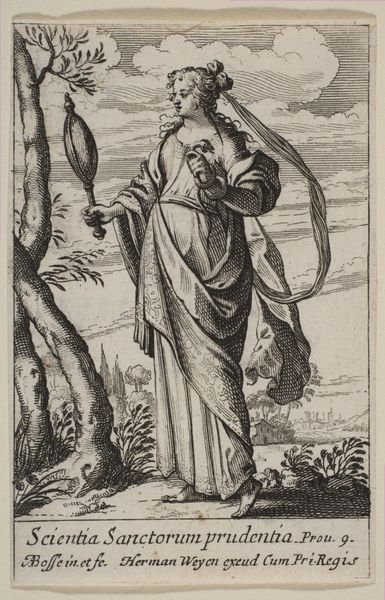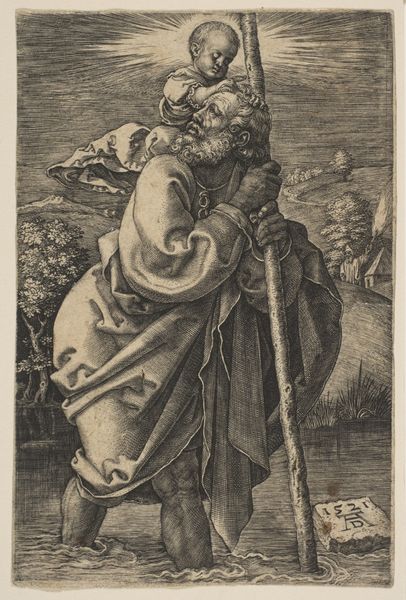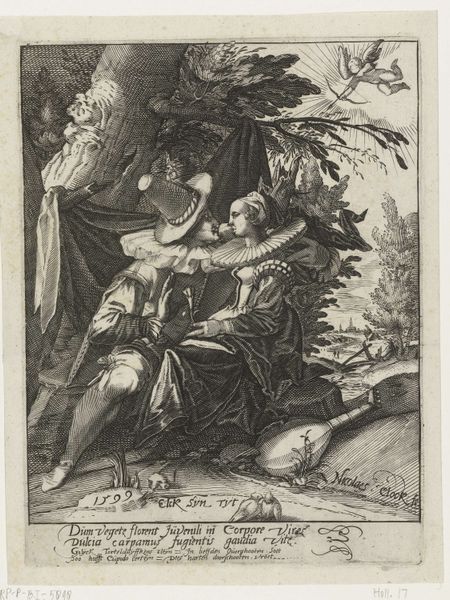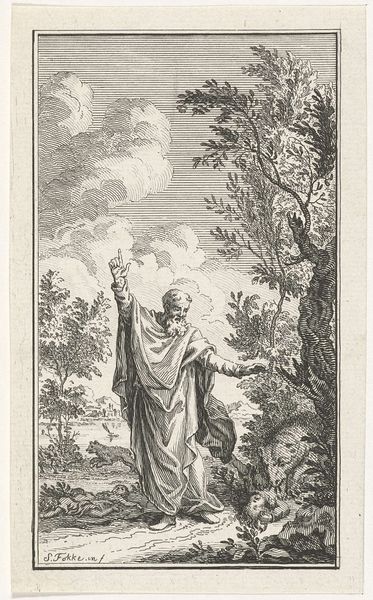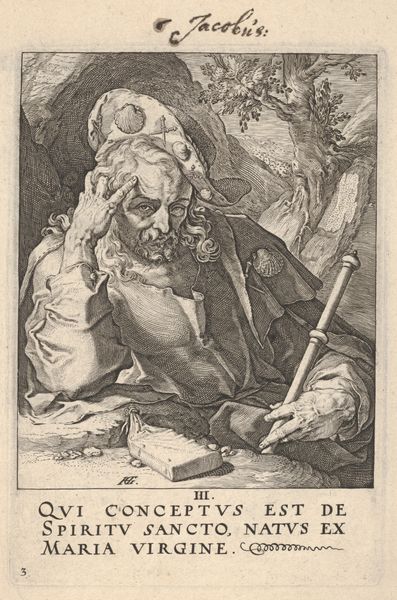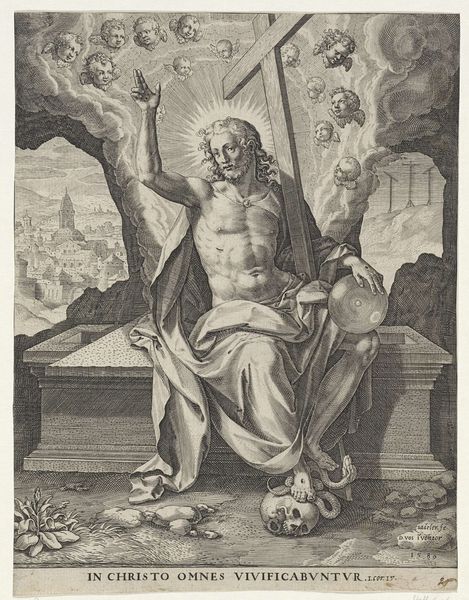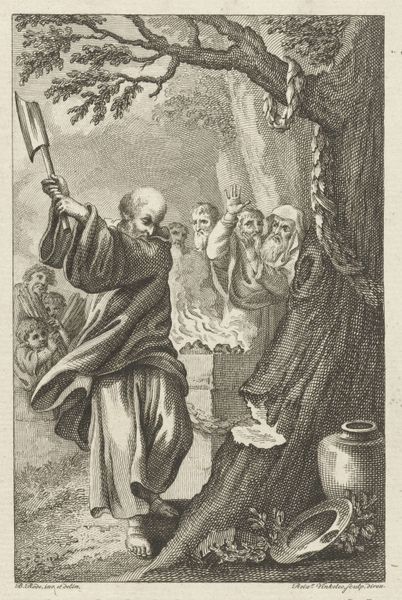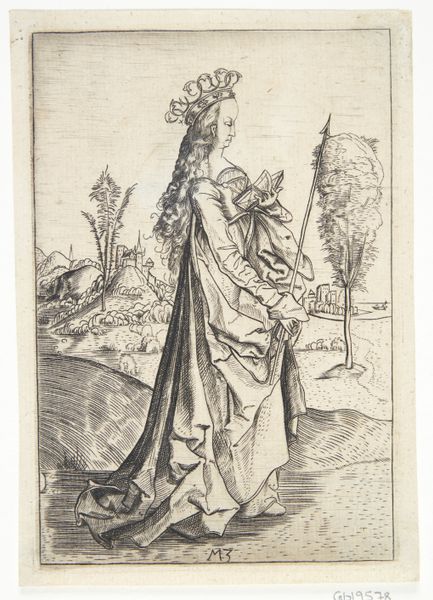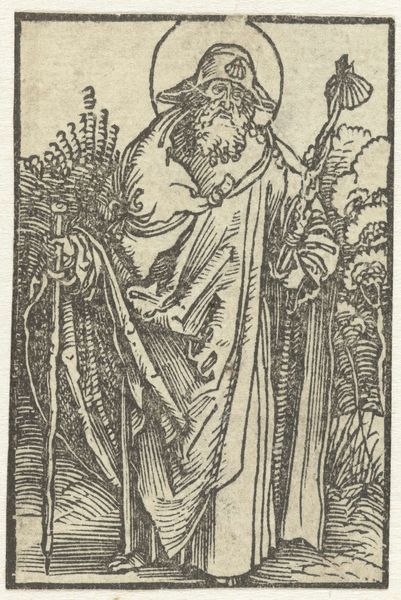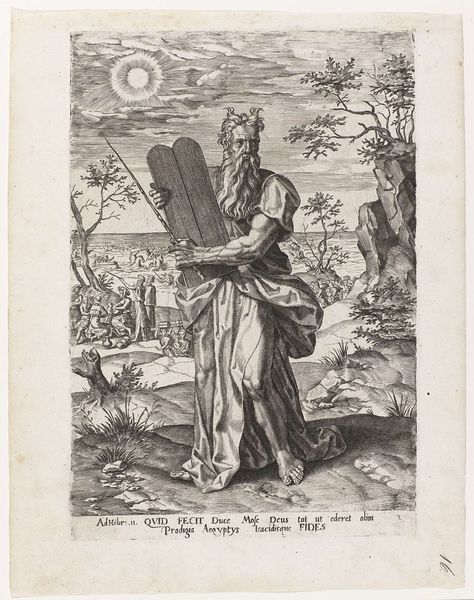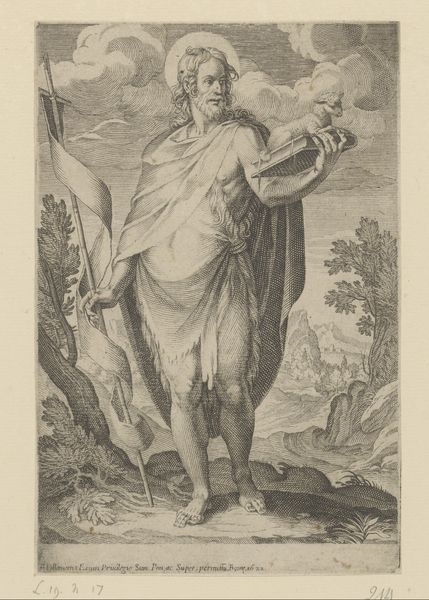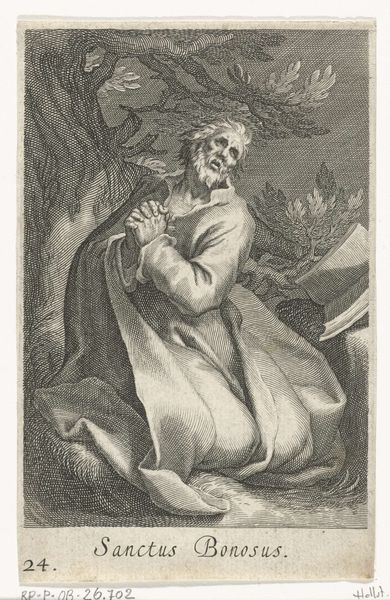
drawing, print, engraving
#
portrait
#
drawing
# print
#
landscape
#
northern-renaissance
#
engraving
Dimensions: Sheet: 13 11/16 × 8 1/2 in. (34.7 × 21.6 cm)
Copyright: Public Domain
Curator: Here we have "St. Dominic Reading," an engraving crafted by Cornelis Cort in 1573, after a design by the artist Bartholomeus Spranger. This work, a product of the Northern Renaissance, is currently held at the Metropolitan Museum of Art. Editor: The initial impression is one of solemn introspection, don’t you think? The saint seems lost in his reading, enveloped by this dense forest. There's a stillness, almost a reverential quality, enhanced by the detailed landscape setting. Curator: Cort was a master printmaker, renowned for translating other artists' designs into highly detailed engravings. "St. Dominic Reading" reflects the artistic exchange of the time, moving ideas across Europe through print. Dominic himself, the founder of the Dominican Order, was a prominent figure during the Counter-Reformation, which profoundly impacted artistic production. Editor: Symbolically, the book is obvious, representing not just literacy but knowledge of the divine. What about the trees, so intimately framing Dominic? It’s tempting to read them as representing both the protective embrace of the Church, and perhaps the spiritual isolation sought by many religious figures. There is that rather angry-looking creature off to the side in the landscape though; not very serene. Curator: A good point about the creature, that winged being could be interpreted as a defeated representation of heresy, alluding to the Dominican Order's role in combating doctrinal deviations. Its presence emphasizes the power of St. Dominic's faith, encapsulated in his act of reading and intellectual pursuit. The placement within a natural setting could also highlight the period’s view of faith intertwined with understanding of the natural world. Editor: The light seems significant. Look how it catches the pages of the book and his face, while much of the landscape is in shadow. His knowledge is literally illuminating, yes? What would such imagery signify to viewers during that tumultuous period? Curator: I think it reinforces the idea of divine knowledge as a guiding light during times of religious and political conflict, assuring viewers of faith's capability to offer clarity amid confusion. Print media like this were carefully curated and controlled by different sides of religious movements to inspire public support and to provide examples of role models of the era. Editor: Considering the wealth of symbols woven into this engraving, it encourages us to delve deeper into how knowledge and spirituality were envisioned during a period of religious reformation. Curator: Exactly. Cort's rendering grants us a vivid understanding of the era’s socio-political dynamics. A simple portrait becomes an historical statement, skillfully translated into image.
Comments
No comments
Be the first to comment and join the conversation on the ultimate creative platform.
